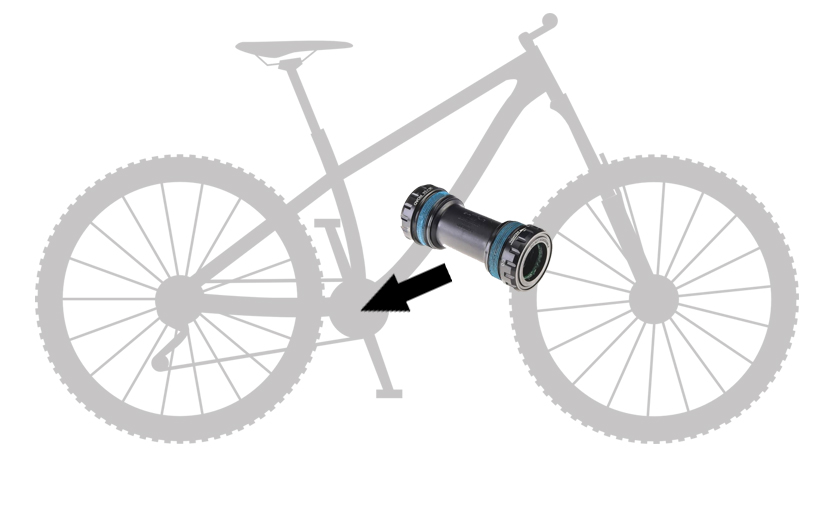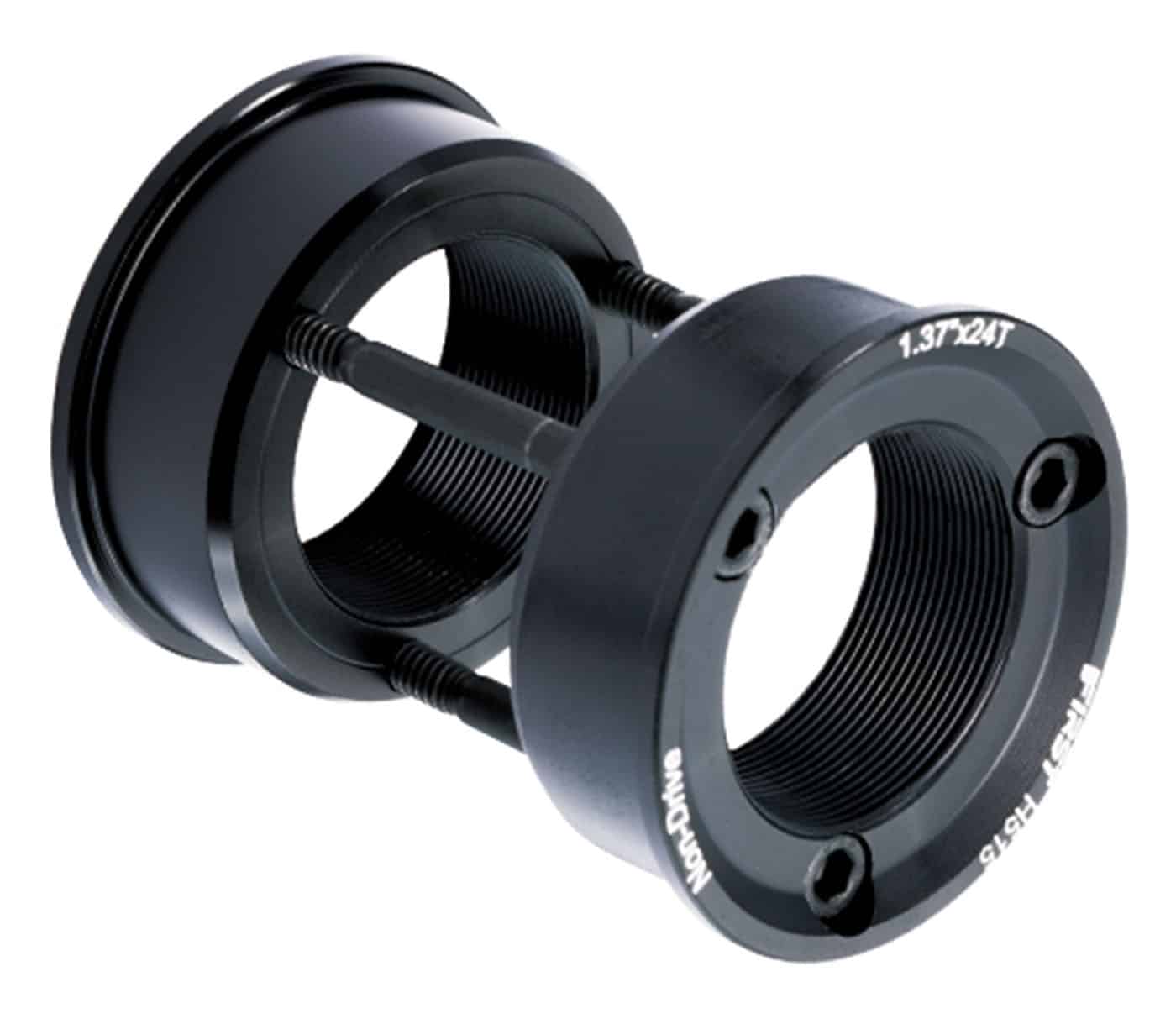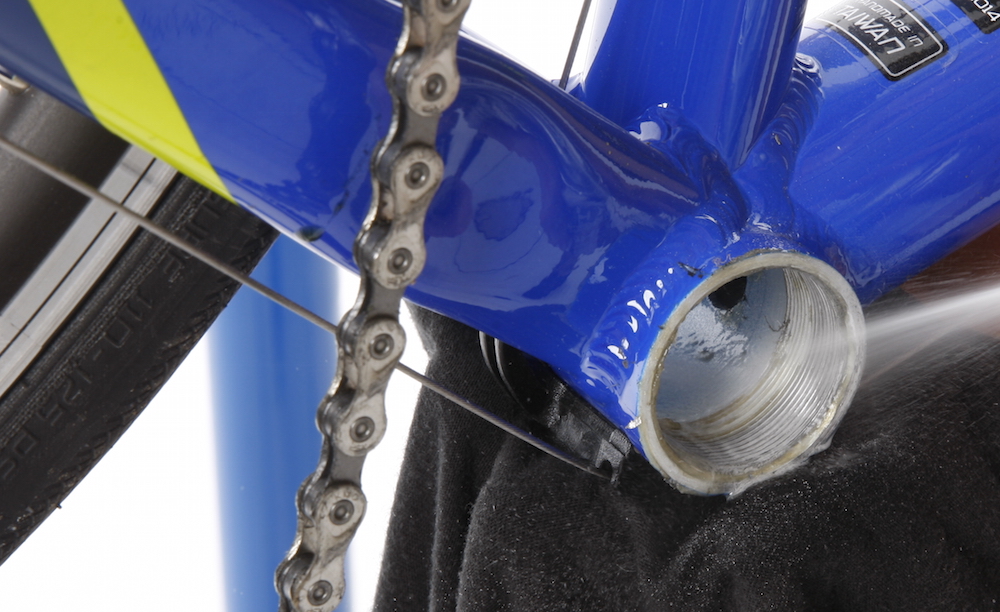What is a Bottom Bracket and Why is it Important?
The bottom bracket of a bike is a critical component that plays a vital role in the overall performance and efficiency of the bicycle. Located at the intersection of the crankset and the frame, the bottom bracket serves as the pivot point for the crank arms, enabling smooth pedaling and power transmission. A well-functioning bottom bracket ensures that the rider’s energy is converted into forward motion, while a poorly maintained or faulty one can lead to decreased performance, increased wear and tear on other components, and even safety hazards.
The bottom bracket consists of a bearing system that allows the crankset to rotate freely, while also providing a secure connection to the frame. This bearing system is typically composed of a set of bearings, cups, and spacers that work together to reduce friction and facilitate smooth rotation. When properly maintained, the bottom bracket can provide thousands of miles of trouble-free service, but neglect or improper installation can lead to premature wear and costly repairs.
In addition to its functional importance, the bottom bracket also has a significant impact on the overall comfort and safety of the rider. A bottom bracket that is not properly installed or maintained can cause the crankset to wobble or vibrate, leading to discomfort and fatigue for the rider. In extreme cases, a faulty bottom bracket can even cause the crankset to fail, resulting in a loss of control and potentially serious injury.
Given the critical role that the bottom bracket plays in the performance and safety of a bicycle, it is essential to understand its function, maintenance requirements, and upgrade options. By prioritizing the health and well-being of the bottom bracket, riders can ensure optimal performance, comfort, and safety, while also extending the lifespan of their bicycle.
How to Choose the Right Bottom Bracket for Your Bike
Selecting the correct bottom bracket for your bike can be a daunting task, especially with the numerous options available in the market. However, by considering a few key factors, you can ensure that you choose a bottom bracket that meets your needs and provides optimal performance.
First and foremost, it’s essential to consider the type of bottom bracket that is compatible with your bike’s frame. There are several types of bottom brackets, including threaded, press-fit, and BB30. Threaded bottom brackets are the most common type and are compatible with most frames. Press-fit bottom brackets, on the other hand, are designed for frames with a press-fit shell and do not require threading. BB30 bottom brackets are designed for frames with a BB30 shell and offer improved stiffness and durability.
In addition to the type of bottom bracket, it’s also crucial to consider the size of the bottom bracket. The size of the bottom bracket will depend on the size of the frame and the type of crankset being used. It’s essential to ensure that the bottom bracket is the correct size to avoid any compatibility issues.
Another critical factor to consider when choosing a bottom bracket is the material of the frame. Different frame materials require different types of bottom brackets. For example, carbon fiber frames require a bottom bracket that is specifically designed for carbon fiber, while steel frames can use a standard bottom bracket.
The crankset compatibility is also an essential factor to consider. Different cranksets require different types of bottom brackets, so it’s crucial to ensure that the bottom bracket is compatible with the crankset being used.
Finally, it’s essential to consider the riding style and the level of performance required. Different bottom brackets offer different levels of performance, so it’s crucial to choose a bottom bracket that meets the rider’s needs. For example, a rider who requires high-performance may want to consider a bottom bracket with ceramic or hybrid bearings.
By considering these factors, you can ensure that you choose a bottom bracket that meets your needs and provides optimal performance. Remember to always consult with a professional mechanic if you’re unsure about which bottom bracket to choose.
Bottom Bracket Maintenance 101: Tips and Tricks
Regular maintenance is essential to ensure the longevity and performance of the bottom bracket of a bike. Neglecting to maintain the bottom bracket can lead to premature wear, decreased performance, and even safety hazards. In this section, we will provide tips and tricks on how to properly maintain and service your bottom bracket.
Cleaning the bottom bracket is a crucial step in maintaining its performance. Use a soft-bristled brush to remove any dirt or debris that may have accumulated on the bearings or surrounding areas. Then, use a mild detergent and water to clean the bottom bracket, making sure to rinse it thoroughly to prevent any soap residue from affecting the bearings.
Lubricating the bearings is also essential to ensure smooth pedaling and to prevent wear. Use a high-quality lubricant specifically designed for bicycle bearings, and apply it to the bearings according to the manufacturer’s instructions. It’s also important to check the lubricant level regularly and to reapply it as needed.
Adjusting the bearings is another important step in maintaining the bottom bracket. Check the manufacturer’s instructions for the recommended bearing adjustment procedure, and make sure to adjust the bearings regularly to ensure proper alignment and smooth pedaling.
Common issues with bottom brackets include creaking, grinding, or play. Creaking can be caused by a loose or worn-out bearing, while grinding can be caused by a misaligned or worn-out bearing. Play can be caused by a loose or worn-out bearing or by a misaligned crankset. To troubleshoot these issues, check the bearing adjustment and lubricant level, and make sure the crankset is properly aligned.
In addition to regular maintenance, it’s also important to inspect the bottom bracket regularly for any signs of wear or damage. Check for any cracks or damage to the bearing cups or surrounding areas, and replace the bottom bracket if necessary.
By following these tips and tricks, you can ensure that your bottom bracket is properly maintained and serviced, providing optimal performance, comfort, and safety for your cycling experience.
Upgrading Your Bottom Bracket: Is it Worth the Investment?
Upgrading the bottom bracket of a bike can be a significant investment, but it can also provide numerous benefits for cyclists. A high-quality bottom bracket can improve the overall performance of the bike, increase durability, and enhance the riding experience. However, it’s essential to weigh the pros and cons of upgrading and consider the potential compatibility issues before making a decision.
One of the primary benefits of upgrading the bottom bracket is improved performance. A high-quality bottom bracket can provide smoother pedaling, increased efficiency, and better power transfer. This can be especially beneficial for serious cyclists who demand the best performance from their bike. Additionally, a high-quality bottom bracket can increase the durability of the bike, reducing the need for frequent repairs and replacements.
There are several popular upgrade options available for bottom brackets, including ceramic and hybrid bearings. Ceramic bearings are known for their high-quality and durability, providing a smooth and efficient pedaling experience. Hybrid bearings, on the other hand, combine the benefits of ceramic and steel bearings, offering a balance of performance and durability.
However, upgrading the bottom bracket can also have some drawbacks. One of the primary concerns is compatibility. Not all bottom brackets are compatible with all frames and cranksets, so it’s essential to ensure that the upgraded bottom bracket is compatible with the existing components. Additionally, upgrading the bottom bracket can be a complex process, requiring specialized tools and expertise.
Despite the potential drawbacks, upgrading the bottom bracket can be a worthwhile investment for serious cyclists. A high-quality bottom bracket can provide numerous benefits, including improved performance, increased durability, and enhanced riding experience. By considering the pros and cons and choosing the right upgrade option, cyclists can enjoy a better riding experience and improved performance from their bike.
Some popular bottom bracket upgrade options include the Shimano Ultegra bottom bracket, the SRAM GXP bottom bracket, and the Chris King bottom bracket. These high-quality bottom brackets offer improved performance, increased durability, and enhanced riding experience, making them a worthwhile investment for serious cyclists.
Bottom Bracket Installation: A Step-by-Step Guide
Installing a new bottom bracket can be a complex process, but with the right tools and a bit of patience, it can be done successfully. In this section, we will provide a step-by-step guide on how to install a new bottom bracket, including preparation, tool selection, and best practices for a successful installation.
Preparation is key when it comes to installing a new bottom bracket. Before starting the installation process, make sure to clean the area around the bottom bracket to remove any dirt or debris. This will ensure a smooth and successful installation.
The first step in installing a new bottom bracket is to remove the old one. This can be done by using a bottom bracket tool to loosen the bearings and then removing the old bottom bracket from the frame. Be careful not to damage the frame or the surrounding components during this process.
Once the old bottom bracket has been removed, it’s time to install the new one. Start by applying a small amount of grease to the bearings and then insert the new bottom bracket into the frame. Make sure it is properly seated and then use the bottom bracket tool to tighten the bearings.
Next, install the crankset and pedals, making sure they are properly aligned and tightened. Finally, test the bottom bracket to make sure it is working smoothly and efficiently.
Tool selection is also important when it comes to installing a new bottom bracket. A bottom bracket tool is essential for loosening and tightening the bearings, and a torque wrench is necessary for ensuring the proper torque specification is met. Other tools that may be needed include a crankset tool and a pedal wrench.
Best practices for a successful installation include making sure the area around the bottom bracket is clean and free of debris, using the correct tools, and following the manufacturer’s instructions. It’s also important to test the bottom bracket after installation to ensure it is working smoothly and efficiently.
By following these steps and using the right tools, you can successfully install a new bottom bracket and enjoy improved performance and efficiency from your bike.
Common Bottom Bracket Problems and How to Fix Them
Despite its importance, the bottom bracket of a bike can be prone to various problems, including creaking, grinding, or play. These issues can be frustrating and affect the overall performance of the bike. In this section, we will identify common bottom bracket problems and offer troubleshooting tips and repair solutions.
Creaking is one of the most common issues with bottom brackets. It can be caused by a loose or worn-out bearing, or by a misaligned crankset. To fix creaking, check the bearing adjustment and lubricant level, and make sure the crankset is properly aligned. If the issue persists, consider replacing the bearing or the entire bottom bracket.
Grinding is another common issue with bottom brackets. It can be caused by a misaligned or worn-out bearing, or by a faulty crankset. To fix grinding, check the bearing adjustment and lubricant level, and make sure the crankset is properly aligned. If the issue persists, consider replacing the bearing or the entire bottom bracket.
Play is another issue that can affect the bottom bracket. It can be caused by a loose or worn-out bearing, or by a misaligned crankset. To fix play, check the bearing adjustment and lubricant level, and make sure the crankset is properly aligned. If the issue persists, consider replacing the bearing or the entire bottom bracket.
In some cases, it may be necessary to replace the bottom bracket altogether. This can be a complex process, but it’s essential to ensure the bike is running smoothly and efficiently. When replacing the bottom bracket, make sure to choose a high-quality replacement that is compatible with the bike’s frame and crankset.
Preventing bottom bracket problems is also important. Regular maintenance, including cleaning and lubricating the bearings, can help prevent issues from arising. Additionally, choosing a high-quality bottom bracket and crankset can help ensure smooth and efficient performance.
By identifying and fixing common bottom bracket problems, cyclists can ensure their bike is running smoothly and efficiently. Regular maintenance and choosing high-quality components can also help prevent issues from arising, ensuring a safe and enjoyable cycling experience.
Product Review: Top-Rated Bottom Brackets for Road and Mountain Bikes
When it comes to choosing a bottom bracket for your bike, there are many options available on the market. In this section, we will review and compare some of the top-rated bottom brackets for road and mountain bikes from reputable manufacturers such as Shimano, SRAM, and Chris King.
Shimano’s Ultegra bottom bracket is a popular choice among road cyclists. It features a high-quality bearing system that provides smooth pedaling and efficient power transfer. The Ultegra bottom bracket is also designed to be durable and long-lasting, with a corrosion-resistant coating that protects it from the elements.
SRAM’s GXP bottom bracket is another top-rated option for road and mountain bikes. It features a unique bearing system that provides smooth pedaling and efficient power transfer, as well as a durable and long-lasting design. The GXP bottom bracket is also designed to be easy to install and maintain, with a simple and intuitive design.
Chris King’s bottom bracket is a high-end option that is designed for serious cyclists. It features a high-quality bearing system that provides smooth pedaling and efficient power transfer, as well as a durable and long-lasting design. The Chris King bottom bracket is also designed to be easy to install and maintain, with a simple and intuitive design.
In addition to these top-rated bottom brackets, there are many other options available on the market. When choosing a bottom bracket, it’s essential to consider factors such as compatibility, durability, and performance. By choosing a high-quality bottom bracket, cyclists can ensure optimal bike performance, comfort, and safety.
When reviewing and comparing bottom brackets, it’s essential to consider factors such as bearing quality, durability, and performance. By choosing a high-quality bottom bracket, cyclists can ensure optimal bike performance, comfort, and safety. In this section, we have reviewed and compared some of the top-rated bottom brackets for road and mountain bikes from reputable manufacturers such as Shimano, SRAM, and Chris King.
Conclusion: The Bottom Bracket’s Impact on Your Cycling Experience
A well-maintained and properly installed bottom bracket is crucial for optimal bike performance, comfort, and safety. By understanding the importance of the bottom bracket and following the tips and guidelines outlined in this article, cyclists can ensure a smooth and enjoyable riding experience.
Regular maintenance and inspection of the bottom bracket can help prevent common issues such as creaking, grinding, or play. By addressing these issues promptly, cyclists can avoid more serious problems that can affect the overall performance and safety of the bike.
Upgrading the bottom bracket can also be a worthwhile investment for cyclists who want to improve their bike’s performance and efficiency. By choosing a high-quality bottom bracket and following the installation guidelines outlined in this article, cyclists can enjoy a smoother and more efficient riding experience.
In conclusion, the bottom bracket of a bike plays a critical role in ensuring optimal performance, comfort, and safety. By prioritizing bottom bracket maintenance and considering upgrading for improved cycling experiences, cyclists can enjoy a more enjoyable and rewarding ride.
Remember, a well-maintained bottom bracket is essential for a smooth and enjoyable cycling experience. By following the tips and guidelines outlined in this article, cyclists can ensure their bike is running at its best and enjoy a more rewarding ride.








